When you are rejected, resilience is there. When life goes wrong at all – guess what? The resilience within picks you up, ready to fight another day. It’s found in the gritty, everyday situations you encounter on a daily basis, whether that’s forcing yourself out of bed or finding your seats in a dark cinema room. It takes inner strength to do what you need to do, let alone achieve success and happiness.
Success and happiness are quantified in different ways. Success may derive from reaching career goals, and happiness could come in the form of meaningful relationships. Whatever it is, the ability to rely on resilience lies at the core. As a result, it mustn’t be neglected. Building a resilient brain helps you overcome obstacles and thrive in life because it allows you to make risky decisions and take risks, all with the knowledge that no matter what happens, you will be okay. Acquiring that isn’t as easy as it seems, but not impossible. Resilience, after all, is a skill you can learn, not necessarily an inherent personality trait.
As is the case with anything you want to improve, merely thinking about it isn’t enough. It requires precise, forward-thinking actions. Some of the tips in this article may seem simple and relatively easy to achieve, but this is just the start. Resilience comes from within.
“Not yet” instead of “I can’t”
From a grammatical perspective, the difference between “not yet” and “I can’t” is as clear as day. One is fairly open-minded, the other is categorical. When building resilience, adopt a “not yet” mindset instead of “I can’t”.
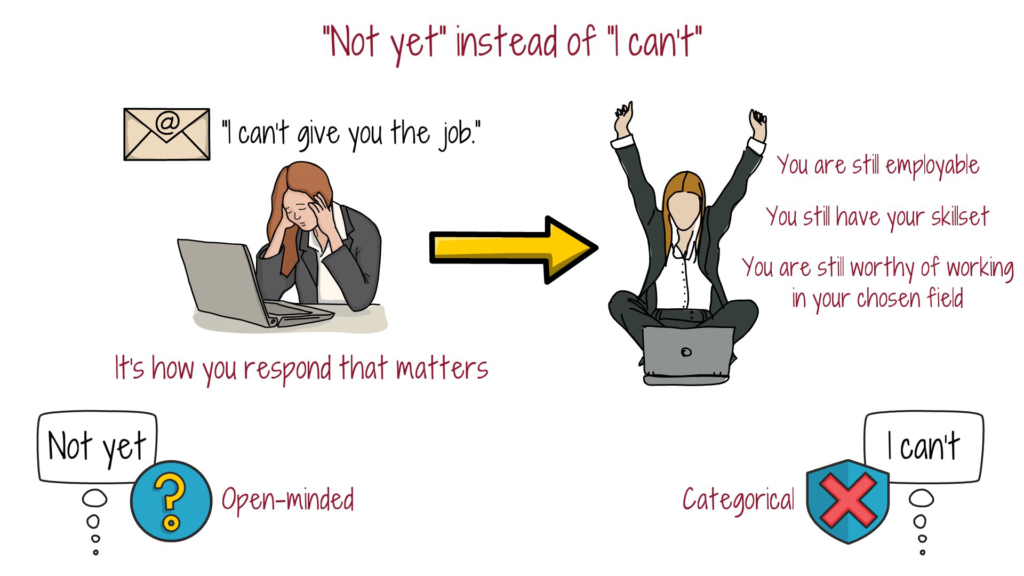
Let’s say you’re rejected from a job. While the email or call you receive may be sugarcoated with well-wishes and potential future opportunities, they’re essentially telling you “I can’t give you the job.” No matter how open-minded you are, sometimes (a lot of the time), that’s as far as you will get. It’s the mindset you receive and respond to the news with that matters.
For example, just because you were told you can’t have the job, that doesn’t mean you aren’t employable. It doesn’t diminish your skillset or make you unworthy of working in your chosen field. It simply means it wasn’t the right place for you at this moment in life. It’s easy to fall down that rabbit hole because “I can’t” feels so definitive. However, responding to disappointment with a “not yet” mindset is to know that not getting the job isn’t exclusively because of anything lacking, but because it simply wasn’t the right fit. It’s that inward resilience; the feeling of security – embracing the disappointment as an opportunity for growth, as setbacks and failure often are.
To put it simply, resilience is the ability to pick yourself up when something doesn’t go your way, dust yourself off, and try again. It’s knowing that failure isn’t infinitely negative. Its ceiling for insight and improvement is higher than you think.
Emphasise effort and progress over perfection
Resilience is built up over time. As you face trials and tribulations throughout life, you learn how you react to difficult situations and what helps you move forward into the next chapter. You find resilience in success and failure, but none of it can happen if you aren’t able to finish something and move on to the next. In other words, not everything you do needs to be perfect.

Perfectionists will struggle with accepting completion as they endlessly tinker with their work and touch up every detail. Dr Brene Brown explains further:
“Perfectionism is not the same thing as striving to be our best. Perfectionism is not about healthy achievement and growth; it’s a shield.”
While striving for perfection may seem like a trait of success, it can have the opposite effect. As Dr Brown says, it’s a shield, protecting the perfectionist from any chance of disappointment. This is precisely why it’s crucial to emphasise effort and progress over perfection.
To put it into context, imagine this: two people are looking to build a blog. Writer 1 is committed to writing high-quality work and regularly publishing. Writer 2 is also devoted to writing professional-grade work, taking as much time as needed to create an immaculate first post. Two writers committed to top-class writing but with one very big difference. Writer 1’s ability to move on puts them in a position to learn from mistakes and become a better wordsmith, thus providing the necessary tools for growing a blog. On the other hand, Writer 2 isn’t as comfortable with hitting publish. A lack of publishing makes it more difficult to build a blog and improve writing skills.
Writer 1 can build resilience. Through emphasising effort and progress, you gain all-important resilience.
Embrace challenges as opportunities for growth
Before this point, there was a time in your life when attaining the things you have now would have seemed an insurmountable climb. The most challenging of challenges come in our most defining moments, whether you’re moving to a new city, meeting new people or simply committing to improving yourself. However, without those challenges, there would be no room for growth, and if there’s no room for growth, then there’s less opportunity to build resilience.
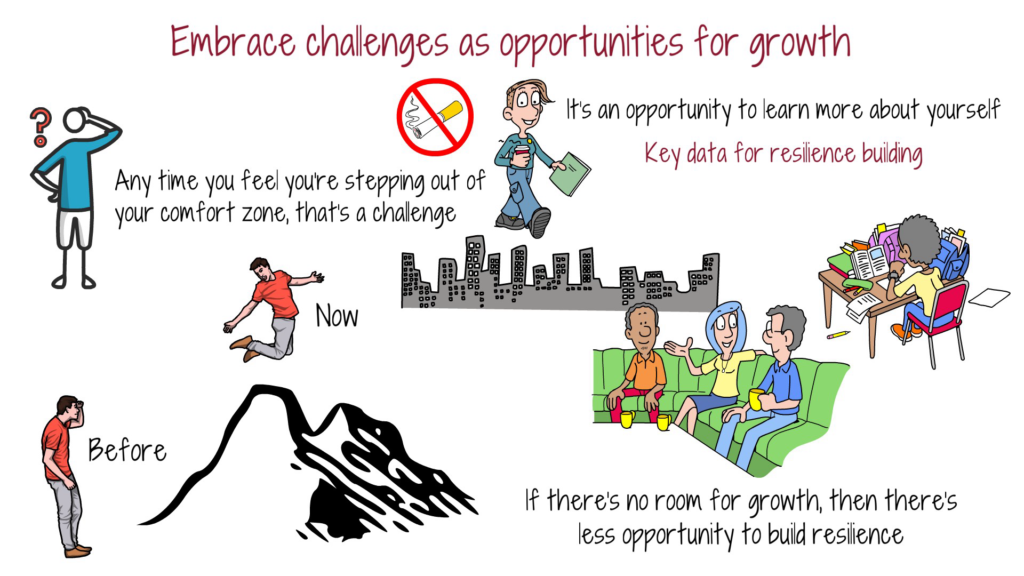
But what does challenging yourself look like? Any time you feel you’re stepping out of your comfort zone, that’s a challenge. It comes in all shapes and sizes – significant life moments as mentioned previously, or smaller-scale milestones such as quitting smoking or going for a walk every day.
It’s an opportunity to learn more about yourself – how do you feel challenging yourself? How are your body and mind responding? Gathering this knowledge is key data for resilience building and as such, overcoming obstacles and thriving in life.
Strengthening the brain’s resilience
It’s all well and good telling yourself to embrace new challenges and avoid perfectionism, but it can sometimes prove difficult to access tangible steps in any self-improvement quest, let alone resilience. If you feel that a more specific plan may help, here are some helpful tips on building your brain’s resilience:
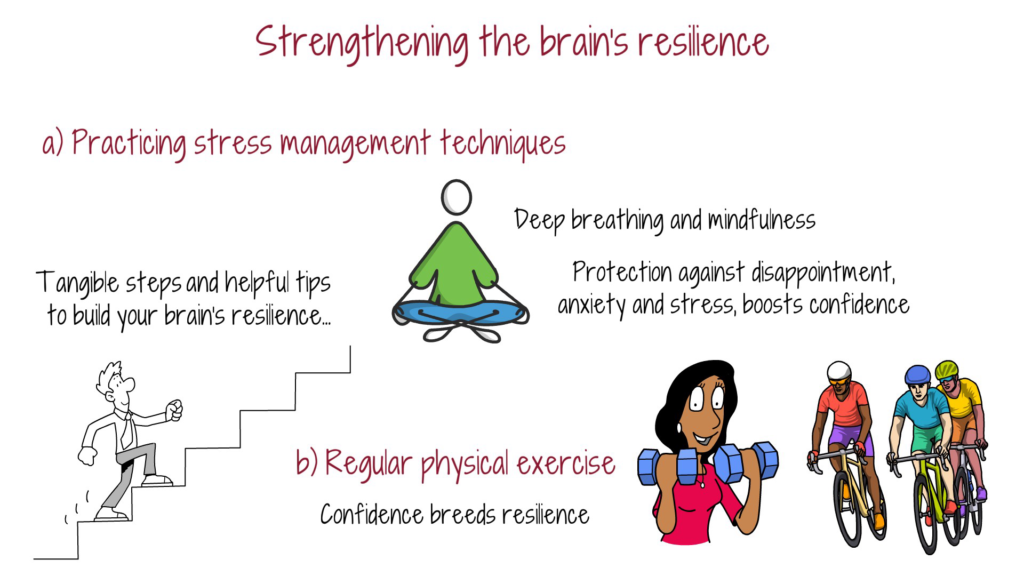
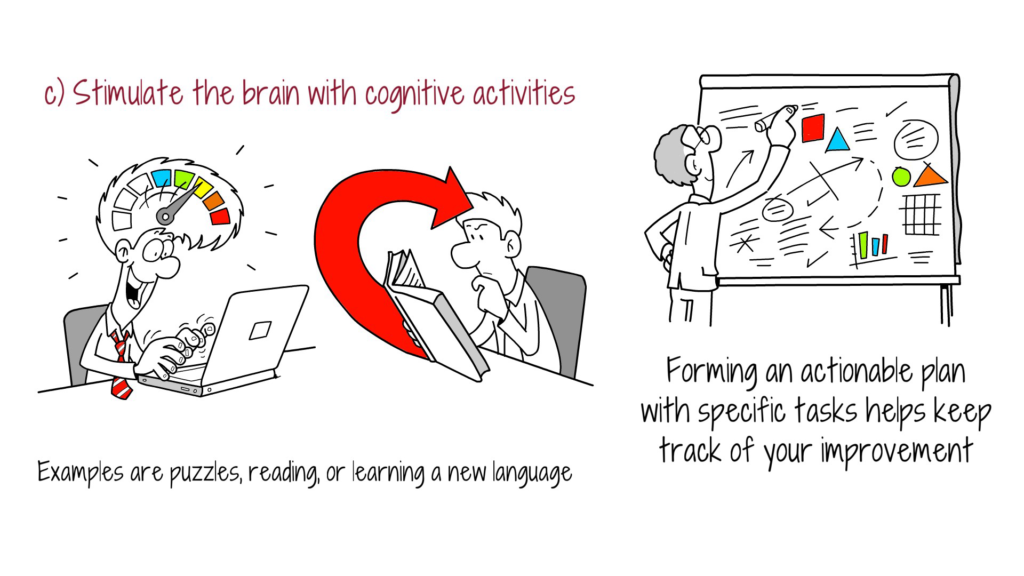
a) Practicing stress management techniques: Exercises such as deep breathing and mindfulness (through meditation) are useful, resilient tools you can use at a moment’s notice. Moreover, knowing you have protection against disappointment, anxiety and stress is a powerful confidence booster.
b) Regular physical exercise: We don’t need to break down the thousands of studies that highlight the physical and mental benefits of regular physical exercise here, but it’s worth noting exercise’s place in building resilience. The more active you are, the more confident you’ll feel in your skin. Confidence breeds resilience.
c) Stimulate the brain with cognitive activities: Your brain’s sharpness is reflected in how quick and steadfast it is in protecting itself. While physical exercise helps with your mentality, the brain needs more stimulation than anywhere else. Keep things ticking over with puzzles, reading, or even learning a new language.
It may sound simple, but forming an actionable plan with specific tasks helps keep track of your improvement. These steps will lay the groundwork for when your resilience is properly tested. Think of these tips as the brawn behind the brain.
Building resilience is possible for anyone
Admitting you need to work on yourself is a resilient trait in itself. Knowing you need to strengthen your defences is no mean feat and is something you should commend yourself for. This article is a starting point. On that, let’s recap how you can build resilience to overcome obstacles and thrive.
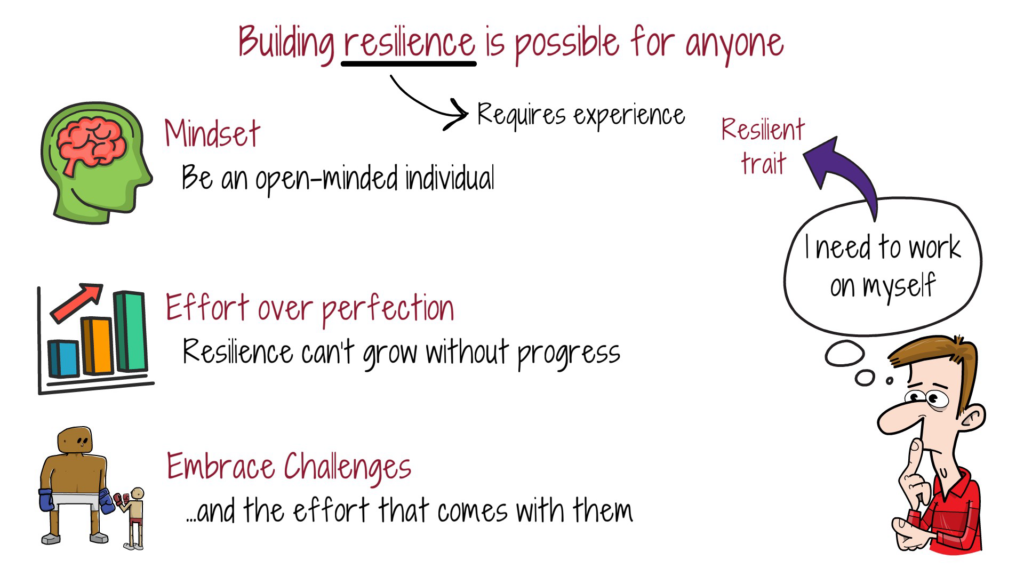
For starters, look into your mindset. Are you a “not yet” or an “I can’t” kind of person? The former is an open-minded individual. They know that just because you don’t meet the requirements for your goals now, you can improve and come back another day.
Building mental resilience helps you combat self-doubt and overthinking. Strengthen your mind with insights from our self-doubt and overthinking guide.
Then there’s choosing to embrace effort over chasing perfection. Resilience can’t grow without progress, and that means accepting your best no matter how you feel. Remember, progress is progress. On a similar note, a resilient person must embrace new challenges and the effort that comes with them, perhaps in the form of new exercises and mental tasks, or bigger milestones such as moving house and quitting smoking.
Resilience requires experience. It takes time to build, so stick with it and learn as much about yourself as you can.
